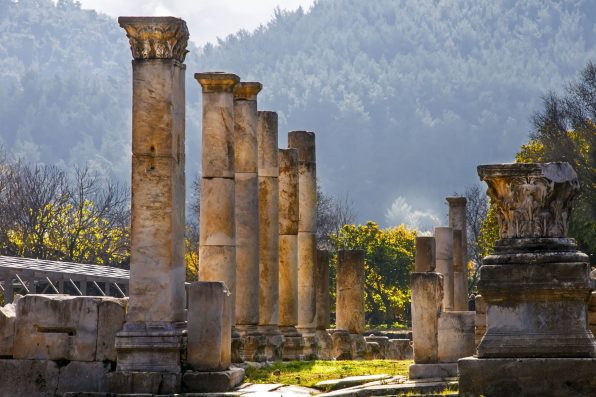Archaeologists In Turkey Recently Uncovered A Dancing Muse Statue From An Ancient Greek Settlement That Had Been Lost For Nearly 22 Centuries

In Turkey, archaeologists recently unearthed a statue of a dancing muse that had been lost for 22 centuries from an ancient Greek settlement.
The statue is approximately 2,175-years-old and is the only known original work of its kind from the Hellenistic period.
The excavations were conducted in the area where the Greek city of Stratonikeia once stood. It is located in what is now the Mugla province in southwestern Turkey.
According to the Turkish Ministry of Culture and Tourism, the site has been occupied by people for more than 3,500 years. Currently, some areas of it are inhabited by the Turkish village of Eskihisar.
During the Hellenistic period in the third century B.C., the settlement got its name of Stratonikeia. In the second century, the city became part of the Roman Republic.
Over time, the region came under the control of the Ottoman Empire, which reigned from the end of the 13th century until the early 20th century.
Known as “the city of gladiators and eternal love,” Stratonikeia was one of the largest ancient cities in the world to be built from marble.
Gladiators trained, performed demonstrations, and spent their years of retirement there. Today, it is a site teeming with historical treasures.
“Stratonikeia, which hosted many civilizations from antiquity to modern times, is one of the significant archaeological sites in Asia Minor and has unique characteristics,” described UNESCO. “The city continuously developed during the Classic, Hellenistic, and Roman Imperial periods and gradually became a center of trade, art, and culture.”

Zeynel – stock.adobe.com – illustrative purposes only
The newly discovered statue of the dancing muse was found in the Roman baths of the ancient city. Unfortunately, it was missing its arms and head. The muses were goddesses of the arts, literature, and science from Greco-Roman mythology.
The credit for the statue’s creation goes to Philiskos, a famous sculptor from the second century B.C. Records show that most of his artwork depicted heroes and deities from ancient mythology. It is believed that he crafted nine sculptures of the muses in total.
The discovery of the statue has served as a major “aha moment” for archaeologists as it confirms the presence of Philiskos in Stratonikeia and offers a glimpse at his skills and the extent of his influence on the ancient art world.
Sign up for Chip Chick’s newsletter and get stories like this delivered to your inbox.
More About:News





